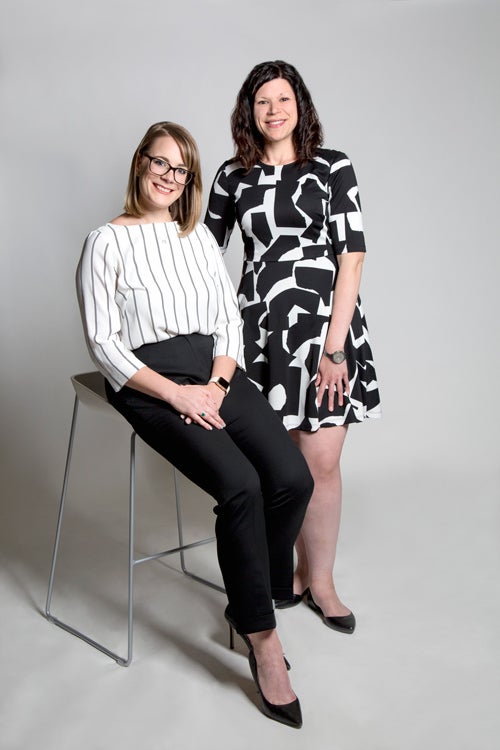When Special Education doctoral student Lisa Didion was a special education teacher for students with various disabilities in Missouri, she saw her classroom as “a never-ending research experiment.” She enthusiastically talks about her attempts to advance her students to an academic and behavioral level on track with their typically-developing peers.
Didion had already earned a master’s degree in Special Education from Vanderbilt University, with a major in behavior disorders, where she developed a penchant for collecting meaningful data on students’ academic progress and behavioral skills. She often used her interest in data collection as a way of motivating herself.
“One day, on my afternoon run, I began thinking about how my own exercise data motivates me to improve my performance,” she says. She thought collecting that kind of data might be motivational for her students too. “I began teaching my students about data by sharing my own. It was important to illustrate for my students that performance can increase and decrease, and to model for them the appropriate emotional responses to these changes. My main objective was to teach the importance of tracking data to monitor progress.”
Didion paired her teaching of data and its relevance to a science unit her class was doing on landforms. “The intervention taught students about their own data, visualized through a line graph, and explained like climbing a mountain,” she says.
And with that, Data Mountain was born.
“It was my biggest ‘Aha!’ teaching moment,” she says. “I created a bulletin board with construction paper and painters’ tape. My students’ faces on cartoon hikers started their ascent of Data Mountain, climbing a peak each time they reached a goal.” Each Friday, she conferenced individually with students to share their academic and behavioral data. “They connected that their behavior while completing a task influenced their performance, illustrated through their data. They began to improve more quickly on weekly progress monitoring assessments. Every year after, for a range of data types, most students showed progress when I used Data Mountain.”
An upper-elementary teacher saw the influence Data Mountain had on Didion’s students and began using the procedure for reading fluency in her classroom, with similar results. The idea began to spread.
In fact, Data Mountain became influential throughout the school district and Didion’s innovative teaching earned her Teacher of the Year.

Didion realized that there was not much written in the education literature on this type of intervention. Some of the research she did find was written by Jessica Toste, assistant professor in the Department of Special Education, whose specializes in motivation research related to students with disabilities. Didion’s desire to pursue a doctorate in the subject led her to the College of Education to study with Toste, who has become her advisor.
Together, Didion and Toste have been conducting a pilot project using Data Mountain as a reading fluency intervention with third-grade students in the Austin area. Says Toste, “Through this type of work, we hope to explore ways to intensify interventions. We want students to become more autonomous and engaged in their learning, so that they can fully benefit from instruction. This pilot study is a first step. Lisa is passionate about teachers and students using data in meaningful ways, and it has been exciting to empirically test an intervention that organically grew from her teaching practice.”
They hope to scale up to a larger investigation, and Didion intends to publish the research, present at conferences, and conduct workshops with teachers to share their methods.
“My ambition was to put science behind my teaching practices and encourage teachers to understand the science behind theirs.”
“When I began to pursue my doctorate, my primary goal was to explore the interventions that were inspired by my students. My ambition was to put science behind my teaching practices and encourage teachers to understand the science behind theirs. I am so grateful that Dr. Toste supports me in this endeavor, challenges me to continue to ask questions as I dive further into the research, and helps me to take full advantage of the opportunities here.”

